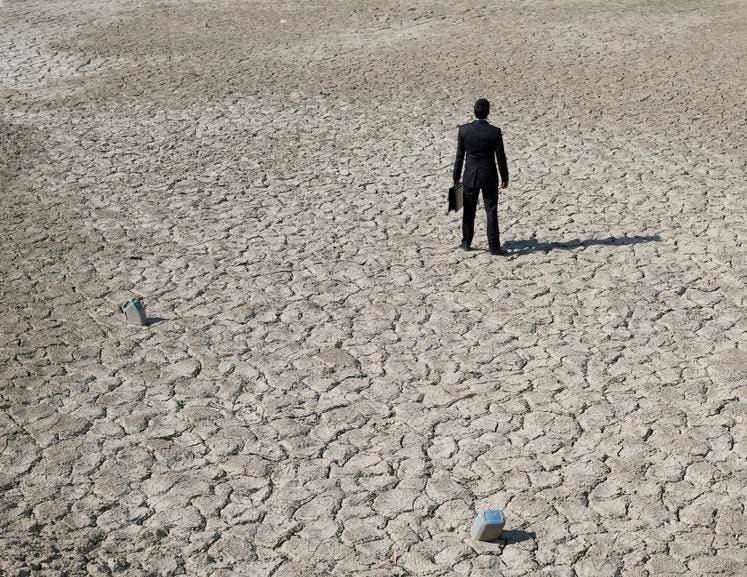Occasionally, discussions arise suggesting that a warming planet could bring certain benefits, principally, to countries in the global north, such as enhanced agricultural productivity; meanwhile, countries located between the tropics of Capricorn and Cancer will bear the brunt of climate change. It may come as a surprise then that new data indicates that many corporate assets in the United States are at the forefront of climate change, confronting substantial challenges that exceed those faced by businesses in other countries.
Former Bank of England Governor Mark Carney was one of the early leaders in the finance world to highlight the physical risks that climate change poses to businesses, including through the expected increased frequency of extreme weather events, sea level rise, changes in temperature, and precipitation patterns. These risks manifest in infrastructure and property damage (i.e. buildings burning down as a result of wildfires), operation and supply chain disruptions, power-shut offs, increased resource costs, business closures, increased insurance premiums, and market shifts. Now, newly released metrics from analytics firm Morningstar Sustainalytics indicate that corporate assets in the United States are particularly susceptible to climate change risks, even in a scenario where the global average temperature rise is limited to 2 degrees Celsius.
Based on an analysis of over 12,000 companies and worst-case warming scenarios, the findings indicate that the average business could experience losses of approximately USD $0.45 for every $1 of cumulative operating cash generated from their ongoing business activities between now and 2050.
However, even under the assumption of limiting average global temperature rise to 2°C by the end of the century, companies in the energy, industrials, materials, and utilities sectors may still face substantial financial losses. Notably, corporate assets in the United States are projected to experience the highest level of overall productivity loss among the assessed companies, starting as early as 2027.
The data is particularly striking when examining companies in the utilities sector, which includes industries such as electricity, water, and gas. This sector has the highest percentage of assets at high risk from climate-related events compared to other sectors. Notably, 50% of the assessed companies’ high-risk assets were located in the United States, while countries such as China, India, Singapore, Japan, and Brazil collectively accounted for 25% of these high-risk assets.
In addition to those owned by utility companies, a considerable portion of corporate assets in the energy, industrial, and materials sectors are also exposed to climate-related risks. Due to the vulnerability of certain key regions in the U.S. to flooding and the anticipated intensification of flooding impacts during the upcoming El Ninõ cycle, many of these assets face an increased risk of damage in the foreseeable future. The data indicates that, on average, companies in these sectors can anticipate cumulative financial losses due to physical climate risks amounting to at least half of their cumulative operating cash flow.
These studies follow the aftermath of the devastating wildfires in Canada that occurred earlier this summer. Somewhat ironically, one of the industries most affected by wildfires, according to Sustainalytics, was the energy sector, particularly oil and gas. Many of these companies were forced to temporarily halt or reduce their production, resulting in significant business disruptions. According to Reuters, at one point, oil and gas producers had to shut down or reduce production by at least 319,000 barrels of oil equivalent per day, accounting for 3.7% of Canada’s total production.
According to the Intergovernmental Panel on Climate Change (IPCC), a warming planet is expected to lead to increased flooding, more frequent and severe wildfires, and unpredictable weather conditions, even if our efforts to mitigate climate change are successful. In addition to companies taking action to address climate change, such as setting science-based targets and implementing emission reduction plans, it is crucial for prudent businesses and investors to consider how they can adapt to the impacts of climate change and climate-proof their assets. This involves assessing and implementing strategies to mitigate the risks associated with climate change, ensuring the resilience and longevity of their operations in the face of changing environmental conditions.
This is not merely a nice-to-do exercise. The increase in insurance premiums for at-risk assets is already evident, and recent events, such as Farmers Insurance discontinuing policies as a whole in Florida due to more frequent disasters, indicate that other insurers may follow suit, deeming certain climate risks uninsurable. This follows the earlier decisions by Allstate and State Farm this year to refuse insurance coverage for certain at-risk assets in states like California. As Sustainalytics also highlights, the intensifying physical consequences of climate change are significantly impacting the profitability of insurance companies, particularly in regions prone to hazards such as wildfires, flooding, and coastal inundation.
There are, of course, several compelling reasons for businesses to prioritize their sustainability efforts. As highlighted by Cisco’s Chief Policy, Purpose, and People Officer, Fran Katsoudas, changing consumer behavior demands that companies take more action on climate change. The energy transition also presents clear investment opportunities as new industries emerge. Furthermore, major customers, including the US Government, will soon require sourcing from companies with credible targets. Nonetheless, ensuring that a business has a clear strategy to manage the threat of climate change to its assets and overall productivity is about as financially prudent as you can get.
Ultimately, new data like these metrics undermine the belief that the Global North will be immune to the impacts of climate change and can simply ride out the challenges. Companies, especially those with assets in the U.S., must recognize the significant consequences they face from the physical impacts of climate change. It is imperative for businesses to take proactive measures, including implementing robust adaptation strategies and reducing greenhouse gas emissions, to mitigate risks and contribute to a more sustainable future for all.
Read the full article here









